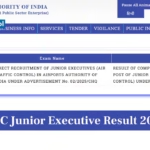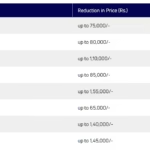Intel Corporation, the iconic chipmaker that once dominated the world of semiconductors, is undergoing one of the most critical phases in its history. With the release of its Q2 2025 earnings, the company offered a mixed message: modest recovery signs in revenue, continued losses, and a restructuring plan that signals a serious transformation effort. As the global semiconductor race intensifies with players like AMD, NVIDIA, TSMC, and Apple charging ahead, results this quarter highlight both the potential and the persistent challenges the company faces.
📊 Revenue Overview: Better Than Expected, But Flat
Intel reported a total revenue of $12.9 billion for the quarter ended June 28, 2025. While this was flat year-over-year, it exceeded market expectations, which were closer to $11.9 billion. After several quarters of declining sales, this marks a potential turning point for the company.
Revenue Breakdown by Division:
- Client Computing Group (PCs): $7.9 billion (down 3% YoY)
- Data Center and AI (DCAI): $3.9 billion (up 4% YoY)
- Intel Foundry Services (IFS): $4.4 billion (up 3%)
The Data Center and AI segment, despite increased competition from NVIDIA and AMD, showed growth—helped by Intel’s focus on hybrid cloud infrastructure and AI-optimized Xeon processors.
💸 Profitability: Losses Widen Amid Strategic Realignment
Despite a slight improvement in revenue, Intel posted a GAAP net loss of $2.91 billion, or $0.67 per share, compared to a loss of $1.61 billion in the same quarter last year. On a non-GAAP basis, the loss was $441 million or $0.10 per share, which missed analysts’ expectations of a modest profit.
Key Reasons for the Loss:
- $1.9 billion in restructuring costs, mainly from workforce reduction and realignment
- $800 million impairment charges, related to underutilized facilities and capital
- $200 million in other one-time operational expenses
This performance underscores ongoing investment in long-term capacity at the cost of short-term profitability.
📉 Gross Margins Decline Further
One of the most concerning metrics was Intel’s gross margin:
- GAAP Gross Margin: 27.5% (down from 35.4% YoY)
- Non-GAAP Gross Margin: 29.7% (down nearly 9% YoY)
Margins are being squeezed due to competitive pricing pressures, higher R&D expenses, and increased manufacturing costs related to their new foundry operations.
💼 Operating & Cash Flow Snapshot
Despite the losses, continues to maintain liquidity strength:
- Operating Cash Flow: $2.1 billion
- Adjusted Free Cash Flow: –$1.05 billion
- Cash Reserves: $21 billion (including short-term investments)
While negative free cash flow may be alarming, it’s part of Intel’s broader capital expenditure plan to expand foundry services and build out facilities in the U.S. and Europe.
🔧 Restructuring Plan: Trimming the Fat to Focus the Vision
Under the leadership of CEO Pat Gelsinger, Intel has acknowledged the need for a massive strategic overhaul. The Q2 earnings report confirms a multi-year restructuring plan aimed at:
- Reducing global headcount by ~10% (about 10,000 jobs)
- Shutting down or consolidating low-efficiency fabs
- Redirecting R&D budgets toward AI chips and advanced packaging
- Accelerating foundry independence from TSMC and Samsung
Intel plans to become a world-class foundry player—not just making its own chips, but also fabricating semiconductors for others, including U.S. defense contracts and third-party chip designers.
🌐 Global Positioning: CHIPS Act and Geopolitical Leverage
Intel continues to leverage the U.S. CHIPS and Science Act, through which it has secured billions in subsidies and grants to build advanced fabrication facilities in Arizona and Ohio.
These efforts not only strengthen Intel’s geopolitical value as a U.S.-based chipmaker but also aim to reduce America’s dependence on East Asian fabs amid rising tensions with China.
Intel also deepened its partnerships with European regulators to build fabrication plants in Germany, aligning with the EU’s push for tech sovereignty.
🤖 Innovation & Product Pipeline: Betting Big on AI
Intel is betting on innovation to drive its comeback. The upcoming Xeon 6 “Granite Rapids” and AI-optimized “Gaudi 3” chips are designed to compete directly with NVIDIA’s and AMD’s data center offerings.
AI Strategy Highlights:
- Launch of Intel Gaudi 3 AI accelerator, boasting 2.5x performance improvement over Gaudi 2
- Integration of OpenVINO toolkit with major cloud platforms for edge AI deployments
- Investment in AI PC ecosystem, working with Microsoft and OEMs for AI-enhanced laptops
While Intel still lags behind NVIDIA in market share for AI chips, these steps demonstrate serious intent to capture a growing segment.
📈 Market Reaction: Cautiously Optimistic
Intel’s stock showed modest movement post-earnings. While some investors were concerned about the continued losses, others saw hope in the improved revenue, cash discipline, and clear roadmap for recovery.
Analyst sentiment remains mixed:
- Bullish View: Long-term investments in fabs and AI will bear fruit by 2026-27
- Bearish View: Margin pressure and competitive headwinds may limit Intel’s agility
⚖️ Challenges Ahead
Despite a promising roadmap, Intel’s journey forward is filled with challenges:
- Fierce Competition – AMD, NVIDIA, and Apple’s in-house chips are eroding Intel’s traditional dominance in both consumer and server markets.
- Execution Risk – Delays or cost overruns in fab construction or chip design could derail strategic timelines.
- Global Macroeconomic Conditions – A downturn in consumer PC demand and inflationary pressures could continue to hurt margins.
- Investor Patience – With multiple quarters of net losses, investor confidence hinges on delivering profitable growth soon.
📅 What’s Next?
Intel reaffirmed its full-year 2025 guidance, expecting:
- Revenue between $53–$54 billion
- Non-GAAP gross margins to stay around 30%
- Free cash flow to turn positive by Q4 2025
This cautious optimism reflects Intel’s balancing act between long-term strategic investments and the near-term need to return to profitability.
📝 Conclusion: Still in the Game, But the Clock is Ticking
Intel’s Q2 2025 earnings reflect the reality of a company that is no longer at the top, but not out of the race either. With a clear strategy, capable leadership, and strong government backing, Intel is laying the foundation for a possible comeback.
But in an industry where innovation moves at the speed of light, execution will be everything. The next few quarters will be critical in determining whether Intel’s transformation is a genuine turning point—or just another chapter in a slow decline.
For now, Intel remains a company in transition, with immense legacy, potential, and pressure to perform.










